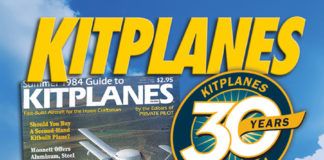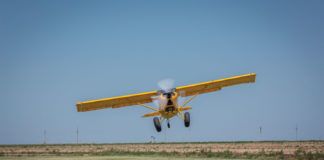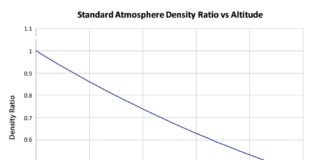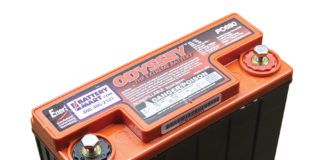No, Im not talking about the water pipes at Starbucks. Im talking about how plastic pipe and the CAFE 400 (Comparative Aircraft Fuel Efficiency 400-mile race) joined forces last August to produce yet another high-efficiency, cost effective GAC (good and cheap) portable ground-based antenna system.
Heres the deal: In 1981, we had long lines at the gas pumps, and there was a fuel-efficiency air race every year at Oshkosh. A group of folks over in Santa Rosa, California, had a different kind of fuel efficiency in mind. What they wanted to know was what aircraft would go the fastest with the most useful load on the least amount of fuel. The famous formula for the CAFE was born: CAFE = mph x weight x mpg (http://www.cafefoundation.org/).
The first few years were sort of interesting in that we really didn’t measure with utmost precision times or weights or quantity. As the contestants became more and more sophisticated with their machines, CAFE also became more sophisticated to the point where we now measure mph to a few feet per second, weight to a few ounces and fuel to a drop or two. And the prize for winning has jumped from $2000 in 1981 to $300,000 this year.
My job is to provide communications between the contest directors in Santa Rosa, the pylons and the contest aircraft. Cell phones have taken much of the work out of the communications between the directors and the pylons, but the problem of contacting the contest aircraft remains.
Of Course
The pylons have been on such places as Mt. Tamalpais, a wide spot in the road called Dunnigan (two gas stations and a truck stop at the corner of I-5 and I-505 near Sacramento International), Lake Almanor up near Quincy, Bennett Peak, Black Butte Reservoir, and Mountains Lassen, Diablo, St. John and half a dozen more. This year the checkpoint/pylons were the summits of Mt. St. Helena near Santa Rosa, Bully Choop near Redding, Banner Mountain near Grass Valley and back to Mt. St. Helena. This means that the contest aircraft had to climb from sea level to 5000 feet to clear Helena, up to nearly 7000 to clear Bully Choop, down to 4000 over Banner, and then back up to 5000 for Helena and back down to sea level for Santa Rosa. By my limited calculations, thats a distance of 399.2 miles, about as close to 400 as you are going to get (Photo A).
If you have any of half a dozen earth-mapping programs, you might want to take a long look at each of these checkpoints, noting in particular the length and twistiness of the roads leading to each summit. Note we’ll also how the real peaks of the summits were some distance away from their automobile access points.
Let me set the scene for you. We have tiny airplanes going like the dickens and passing over mountain tops, some of which have good tree cover. Most of the mountain tops are some distance from where you get to park your car, so you will have to pack in every piece of equipment you use. The rubber duckie that came with your handheld aviation-band radio is nearly as good an antenna as a strand of limp spaghetti inside of a copper septic tank, and it wont let you talk but a few miles at most, giving you scant seconds to make contact with the contest aircraft before they zoom overhead. You need an antenna, Bunky, not that piece of rubber resistor called a flexible foreshortened whip, but one thats lightweight and sturdy.
Another consideration is that you don’t always have the same surroundings. Sometimes it is pine trees, sometimes it is bare dirt with a fence around it, but always there will be some man-made structure that can be used as a visual landmark for the pylon. The microwave towers on Helena. The antenna structures at Bully Choop. The fire lookout tower on Banner. Some structure can be seen from a long ways away as an aim-for point. Unless you want to backpack in an extremely heavy piece of equipment to act as an antenna mast, you want a couple of different ways of getting your antenna as high up in the sky as possible.
Why high? Because with height comes range. Now, Im not one for long complex equations, but this one is pretty simple: R = the square root of (2 x (h1 + h2)) where R is the distance that station one can talk to station two (in miles), and h1 and h2 are the heights of the antennas above the surrounding terrain in feet. But, Jim, doesn’t the transmitter power have anything to do with range? A second-order effect at most. The theoretical range between a 1-watt transmitter and a fairly numb receiver (10 microvolts) is something on the order of 150 miles if there is no earth curvature between them. Contacts between handheld transmitters running a watt or two and space station Skylab are quite common.
Far-Ranging?
So whats the range of our simple antenna? Let’s use Banner as an example. The terrain surrounding Banner is something like 2500 feet MSL, and the top of Banner is about 4000 MSL, giving the top of Banner a 1500 AGL figure. If the aircraft is also at 4000 MSL (1500 AGL), then the range is going to be about 75 miles. Such things as other metal structures around the ground antenna, foliage, other antennas and people themselves are going to further restrict range, so the idea is to get the antenna as far away from large pieces of metal and from people as possible.
Two ways of mounting the antenna are sturdy, lightweight and eminently portable. One is a long piece of string tied to a hook on the top of the antenna, and another is to provide a flimsy mast that can be secured to a wood (or, for that matter, short metal) post using string or tie-wraps.
This month Ill show you the completed antenna and the two methods of attaching the antenna to a mast of some sort, and then well leave the actual design and construction of the antenna for next month.
Photo B is the hook, which is threaded into one of the end caps that we will use to hoist the antenna into a friendly tree. Please don’t forget to mark your antenna with the frequency you constructed it for (Photo C). The aircraft band antenna and the amateur 2-meter antenna look remarkably similar if you haven’t seen them for a while. Photo D shows how the antenna is assembled: The balun sleeve threads into the antenna body, the hook is at one end of the antenna body, and the extension pole(s) for post mounting thread into the other end.
Photo E shows the antenna hoisted up about 20 feet into a Douglas fir tree, using twine (white thread) visible in the center of the picture. I used a fishing weight to toss it up into the tree and hoist with. Note the coax lead-in coming out of the balun sleeve. Paint the pipe green and hoist it up with black twine, and you have the original aircraft-band stealth antenna. Photo F illustrates the other way of mounting the antenna. Tie-wraps hold the extension pole to the steel fence post, and the coax is again seen coming out of the balun sleeve.
Next month, we’ll get to how the whole mechanism is constructed, assembled and tested. See you then.













